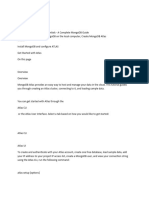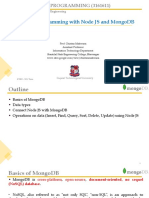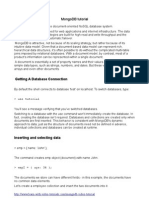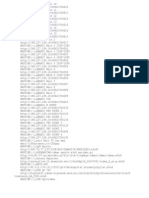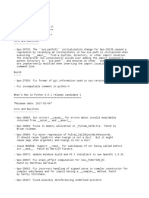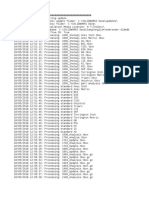0% found this document useful (0 votes)
16 views6 pagesMongodb Commands List and Analysis
The document provides a comprehensive guide to MongoDB, a NoSQL database that uses JSON-like documents for data storage. It covers installation, basic database operations, CRUD operations, query modifiers, aggregation, indexing, user management, and administrative commands. Additionally, it includes practice exercises to reinforce learning and application of the concepts discussed.
Uploaded by
peddipoojitha85Copyright
© © All Rights Reserved
We take content rights seriously. If you suspect this is your content, claim it here.
Available Formats
Download as PDF, TXT or read online on Scribd
0% found this document useful (0 votes)
16 views6 pagesMongodb Commands List and Analysis
The document provides a comprehensive guide to MongoDB, a NoSQL database that uses JSON-like documents for data storage. It covers installation, basic database operations, CRUD operations, query modifiers, aggregation, indexing, user management, and administrative commands. Additionally, it includes practice exercises to reinforce learning and application of the concepts discussed.
Uploaded by
peddipoojitha85Copyright
© © All Rights Reserved
We take content rights seriously. If you suspect this is your content, claim it here.
Available Formats
Download as PDF, TXT or read online on Scribd
/ 6











